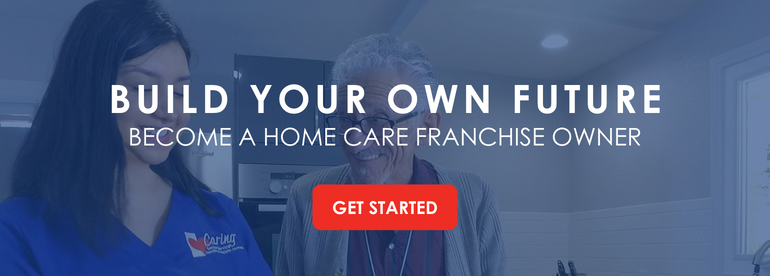As life expectancy increases and medical technology improves, older adults are enjoying more years of good health than ever before. These seniors often need assistance to remain safe and complete daily tasks. That's where senior care comes in.
Senior care includes a range of services that help the elderly population maintain their quality of life. These services can be provided in an institutional setting, like a nursing home or assisted living facility, or can be provided at home. But as the senior population grows, the senior care industry will have to grow and adapt. Luckily, there are some promising trends and developing technologies that may shape the industry moving forward.
Home-Centered Solutions
While institutional care, like nursing homes and assisted living facilities, have been a go-to option for seniors for many years, most seniors today would prefer to age at home. According to the latest AARP "Home and Community Preferences Survey" in 2021, 77% of adults over the age of 50 want to remain in their homes for as long as possible. Luckily, senior home care allows the aging population to do just that.
Home care, like what Caring Senior Service provides, is one-on-one care provided in a home setting. A caregiver can assist with tasks like laundry, transportation, medication reminders, and activities of daily living. Having a helping hand at home can help seniors remain independent and safe while maintaining their quality of life.
But home-centered solutions also include changes to traditional senior living. There is an increasing demand for multi-generational housing so that families can live together. Families may build tiny homes on their property or add a suite so that aging family members can be close.
Co-housing options for seniors are also expected to become more commonplace. A small group of seniors could live in the same independent home together and share the responsibilities and duties of home ownership. Others are reimagining this idea to include housing options where seniors and young adults can live together and help each other.
Technology
Advances in technology have improved the quality of senior care and will continue to do so. Technology can help reduce labor costs and extend the reach of care providers so that seniors' needs can be met in a timely manner.
Below are a few specific examples of technology improving the senior care experience.
- Remote monitoring devices: These devices can be installed in a care environment or can be worn on the body or clothing. They are designed to monitor different risk factors to help identify and predict health hazards. For example, a sound monitoring system can determine when a senior usually uses the restroom and indicate a urinary tract infection if they are toileting more frequently than normal.
- Smart appliances: Smart appliances are becoming less expensive and more commonplace. Seniors can turn on lights, adjust the temperature, and even lock doors. You can set devices on timers, avoiding the need for reminders. Many of these devices can be accessed from afar and access can be shared with family members.
- Voice user interfaces: Alexa, one of the most common voice user interfaces, has gotten smarter over the years. These interfaces can help seniors with reminders, grocery shopping, entertainment, loneliness, and more.
- Artificial intelligence: AI is expected to play a large role in senior care moving forward. Machine learning algorithms can be built into any of the technologies listed above. They can analyze data to predict which seniors may be at risk for certain health issues, allowing healthcare workers to intervene before a problem becomes serious.
- Robots: While we won't be replacing human caregivers with robotic ones anytime soon, there are robots that can assist seniors with various tasks. In fact, some have been deployed to help with tasks like cleaning up dishes in an assisted care facilities. Others act as exoskeletons or assistive limbs to help seniors get around.
Technology will play an increasing role in elder care. However, we must be wary that high tech does not replace high touch. Older adults will always benefit from personal relationships with other humans.
RELATED CONTENT: High Touch Meets High Tech in Senior Care
Personalized Care
Another promising development in senior care is the focus on personalized care. Rather than taking a one-size-fits-all approach to healthcare, providers are recognizing the importance of tailoring care to each individual's unique needs and preferences. This means taking into account factors such as cultural background, language, and social support networks.
While some care companies, like Caring Senior Service, were founded on this personalized approach, it is not widespread in the industry. By creating a more personalized approach to care, providers can ensure that seniors are receiving the support and assistance that they need to thrive.
Labor Shortage
Since the COVID-19 pandemic, many senior care businesses are experiencing a labor shortage of skilled and non-skilled workers. As a result, many of the existing workforce are being pushed to their limits and on the brink of burnout. But with the growing senior population, the number of seniors wanting care is expected to grow. And this labor shortage could lead to seniors being unable to get the care they need.
Staff has cited burnout as well as low pay and lack of advancement opportunities as some of the top reasons for leaving senior care. Companies are already starting to make changes to bring back some of the workforce and entice more individuals to join the senior care industry. Some of these changes include bolstered employee reward programs to improve retention, increases in pay rates, more flexible schedules, and additional paid benefits.
Increasing Costs
The cost of nursing homes and adult daycare services increased by roughly 5% between 2021 and 2022. And with rising inflation in the US and the continued labor shortage, we can expect the cost of senior care to continue to rise. As a result, small senior care businesses may not be able to keep up with expenses. Likewise, the seniors who need care may not be able to fully cover the costs.
Technology may be able to curb some of these costs as companies streamline operations. However, it will never be a replacement for the workforce, which is at the heart of senior care. But there is also a continual push for legislation to help seniors cover the rising costs of care. If passed, legislation designed to boost home and community-based services could dramatically change the landscape of the senior care industry.
Making Your Mark in Senior Care
If you want to make a difference in senior care, consider starting your own home care company with Caring Senior Service. We are embracing technology and the future of senior care. With a home care franchise, you will be able to directly assist seniors in your community while building a successful business with a promising client base.
If you are interested in satisfying the growing need for quality care, contact us to discuss how opening a non-medical home care franchise can be a successful endeavor for you and your community.


